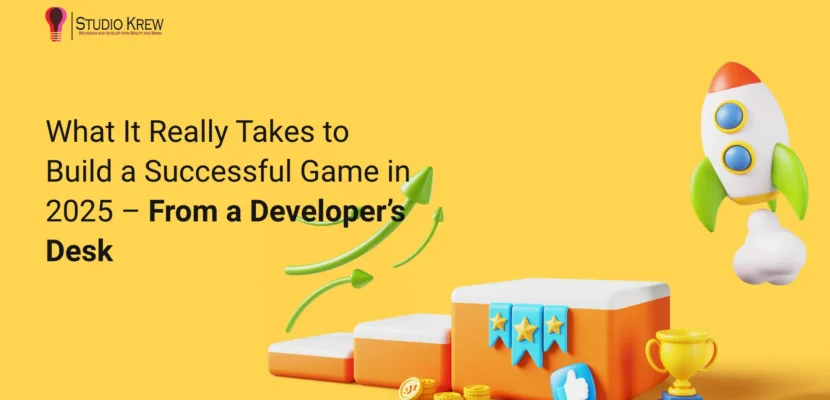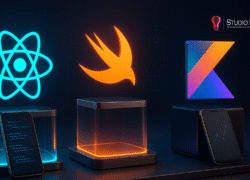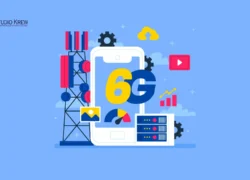The mobile and online gaming landscape in 2025 is more ambitious and competitive than ever before. Hundreds of games hit the app stores every week, but only a few cross the finish line of profitability and mass adoption.
At StudioKrew, we’ve built everything from massive multiplayer games to gamified education platforms and from web3 games to NFT-based gaming ecosystems. As the CTO, I’ve seen firsthand that building a successful game requires far more than good code or slick visuals.
In this article, I’ll share a developer’s real-world guide to launching a successful game in 2025. It will cover tech stacks, planning strategies, and lessons learned from some of our top projects, such as Taubola and GoldeFy.
First Things First: Get Your Tech Stack Right
No matter how brilliant your game idea is, poor technical choices will tank performance, retention, and scalability.
Here’s the battle-tested stack we recommend and use across most of our custom game development projects:
- Unity is the industry-standard engine for building 2D, 3D, and AR/VR games with cross-platform support. The recent Unity 6 update extended the compatibility to new levels.
- Photon (PUN / Fusion) – Our go-to solution for real-time multiplayer and matchmaking systems.
- Node.js – For scalable backend logic, APIs, matchmaking engines, and admin panels.
- MongoDB – Flexible, fast, and perfect for storing user progress, stats, and game economies.
- Redis – Used for real-time caching, matchmaking queues, and leaderboard logic.
- NGINX + AWS S3 – To smoothly handle media streaming, load balancing, and content delivery.
Case Study: Taubola – Scaling Bingo to 5,000+ Live Players per room
Taubola is a real-money Bingo game that delivers live multiplayer gameplay with voiceovers, live leaderboard and admin-controlled game schedules. Built with Unity and Socket, it can scale beyond 5,000 concurrent players per room.
Core Tech Stack:
- Unity + Socket for front-end gameplay and real-time sync
- Custom RNG engine in Node.js
- MongoDB + Redis + Socket are used for session, game state management, and number broadcast, maintaining sync accuracy within less than a second.
- AWS S3 + NGINX for scalable voiceover streaming
- DynamoDB for persistent wallet, transaction histories, and for live leaderboard.
This project proved that when it comes to multiplayer scalability, architecture and optimization beat brute-force resources.
Behind the Scenes: Building a Game That Succeeds
Whether you’re an indie studio or a funded startup, here’s what the StudioKrew development roadmap typically includes:
Discovery & Game Design
We collaborate to outline:
- Core game mechanics
- Monetization strategies
- Player personas & retention loops
Technical Planning & Sprint Setup
Using Agile methods, we break development into sprint cycles covering:
- Prototyping
- Multiplayer testing
- Backend setup
- Test Cases and Security Cheat Sheet estimations
- Store integrations (Google Play, Apple App Store)
👉 Learn more about our Mobile Game Development Services
QA & Game Launch Checklist
Our game launch checklist includes:
- Firebase + GameAnalytics integration
- Ad network configuration (Unity Ads, AdMob, IronSource)
- Beta group testing with session recording
- Scalability simulations (for >500 CCUs)
Post-Launch Support & LiveOps
We monitor in-app events and feedback using:
- CI/CD pipelines for fast updates
- Remote config for A/B testing
- Custom LiveOps dashboards
Case Study: GoldeFy – The Web3 x Casual Game Hybrid
In GoldeFy, we helped build a unique play-to-earn ecosystem with blockchain-powered assets, player rewards, and NFT marketplaces.
Tech Integrations:
- Unity + WebGL + Web3.js
- Smart contract APIs in Solidity
- Token-gated asset unlocks
- MongoDB for user inventory
- MetaMask wallet integration
- Photon Fusion2 for Multiplayer
- Agora for Spatial Audio
Whether you’re in DeFi or GameFi, the takeaway is the same: custom game developers must design for real economies and real retention.
Why Hiring Custom Game Developers Matters
No template or plug-and-play engine will get you the depth, polish, and performance your game needs today. You need a team that thinks holistically — from backend scalability to UI motion design to monetization triggers.
Thinking of building something amazing? Check out our Game Development Services and let’s talk about how to hire a game developer who can turn your concept into a commercial hit.
StudioKrew Pro Tips for 2025
- First 5-Minute Optimization: Your tutorial and early gameplay must create clarity, confidence, and emotional hook. We test this with real users.
- Low-latency multiplayer isn’t optional — use Photon Fusion or Socket clusters with Redis based on your game end objective.
- Design economy loops before development — your LTV depends on it.
- Plan your test cases and cheat prevention strategy to prevent unethical activity in your game.
- Use Firebase Remote Config to test features without needing new builds.
- Prioritize first-session experience — retention starts on Day 0.
- Pre-Launch Economy Simulations: We simulate item pricing, currency flow, and purchase triggers to avoid grind walls or inflation.
- Early Funnel Analysis: GameAnalytics + Firebase help us analyze when players interact with IAPs, ads, or gated content — and why they drop off.
Explore our full-stack game development services for mobile, console, and Web3 titles.
Final Thoughts
Building a successful game in 2025 is about blending technology, psychology, and scalability. It’s not just art or science — it’s both. And at StudioKrew, we thrive in that sweet spot.
As your technology partner, we don’t just build games — we help them grow, retain, and monetize users effectively. Whether launching your first title or scaling your tenth, we’re the custom game development company that brings your vision to life.
Let’s Talk Game.
Whether you need to audit a prototype or launch a global title — reach out to StudioKrew and let’s build your success story. Contact Us Now





